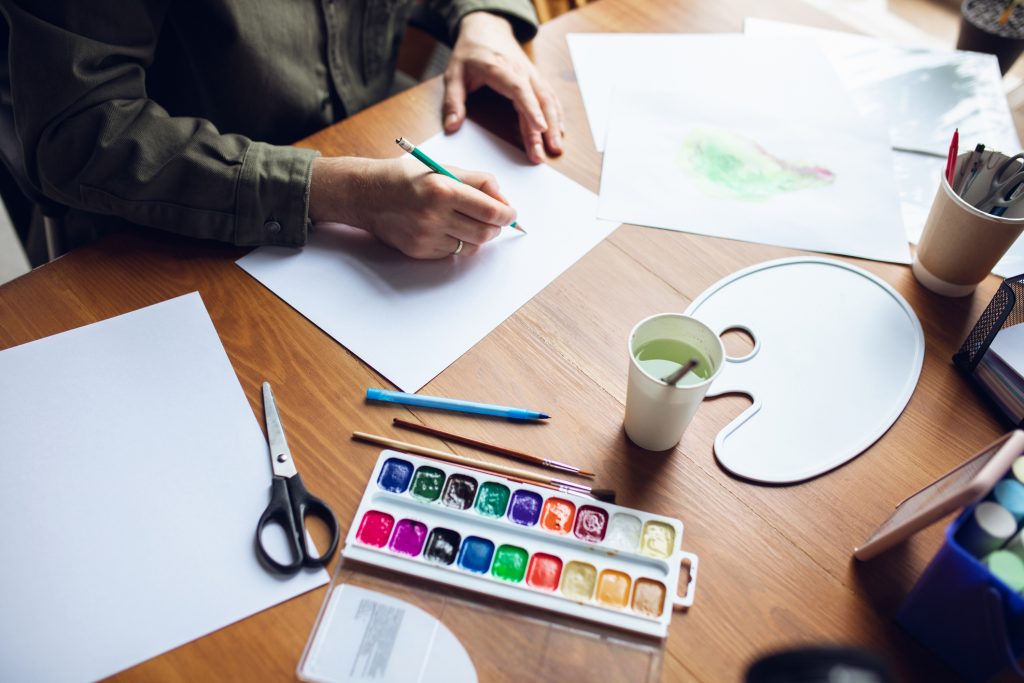
Mental health treatment can be supplemented by various tools that go beyond sitting in a chair and talking to a therapist. One of these tools is art therapy. Art is an expressive medium that can help veterans communicate their feelings, overcome, and release stress while exploring different aspects of their personalities and abilities.
Since the 1940s, art therapy has been recognized as a tool or formal program for mental health. Doctors noted that people living with mental illness could express themselves through drawings and other art forms, which led many doctors to explore the use of art to heal effectively. This led to art becoming a crucial part of therapy and can be used to assess and treat individuals.
Art therapy is defined as the use of artistic methods to treat psychological disorders and improve or enhance mental health. Veterans can use painting, drawing, collage, sculpting, or coloring to express themselves artistically while examining the psychological undertones within their art.
Through the guidance of a credentialed art therapist, veterans can decipher the nonverbal messages, metaphors, and symbols expressed through their art. This can help them better understand their behavior and feeling to help them resolve deeper mental health issues.
Throughout creating their art, veterans will have the chance to analyze their art piece and reflect on their feelings on thoughts that it provokes. Through this art exploration, veterans can search for themes and conflicts that may be affecting their behaviors, emotions, and thoughts.
From 2001 to 2011, roughly 2.6 million US service members were deployed to serve in the military during Operation Enduring Freedom and Operation Iraqi Freedom. Research suggests that anywhere between 10% and 18% of veterans who served in those missions came home with Post Traumatic Stress Disorder (PTSD).
PTSD can bring upon intense and debilitating fear, negative moods, and depression, all of which can have a profound negative impact on the lives of veterans. Based on a 2012-2014 survey by the National Intrepid Center of Excellence, an outpatient clinic that treats Traumatic Brain Injuries at the Walter Reed Military Center, art therapy ranks as one of the top five most helpful techniques that are used to treat service members suffering from PTSD.
Research by Creative Forces, a national military healing arts program, has shown that over 500,000 men and women of the US armed services live with PTSD or a traumatic brain injury. Creative Forces was created as a joint effort between the Departments of Defense and Veterans Affairs and the National Endowment of the Arts. This organization reports that 85% of their patients at the Walter Reed Medical Center say that art therapy has helped heal.
Typically, art therapy works in three segments. Participants will start with a check-in that helps them establish an emotional starting point. The next segment includes an artistic prompt where the participant will begin to actively produce artwork in their chosen medium. The final segment will be the wrap-up, where participants will share meaningful dialogues about their artwork.
Art therapy uses a variety of activities and media and is approached from various avenues. Drawing is a popular activity for art therapy. Photography is another common activity that provides participants with the ability to give visual form to their personal feelings. Other art therapy forms include but are not limited to acting, poetry, singing, instruments, painting, dance, etc.
If you are interested in getting started with art therapy, Veterans Place of Washington Boulevard, a veterans organization in Pittsburgh, can help you find the right resources to get started.
Contact us today to learn more about how Veterans Place is helping homeless veterans in the Pittsburgh region.